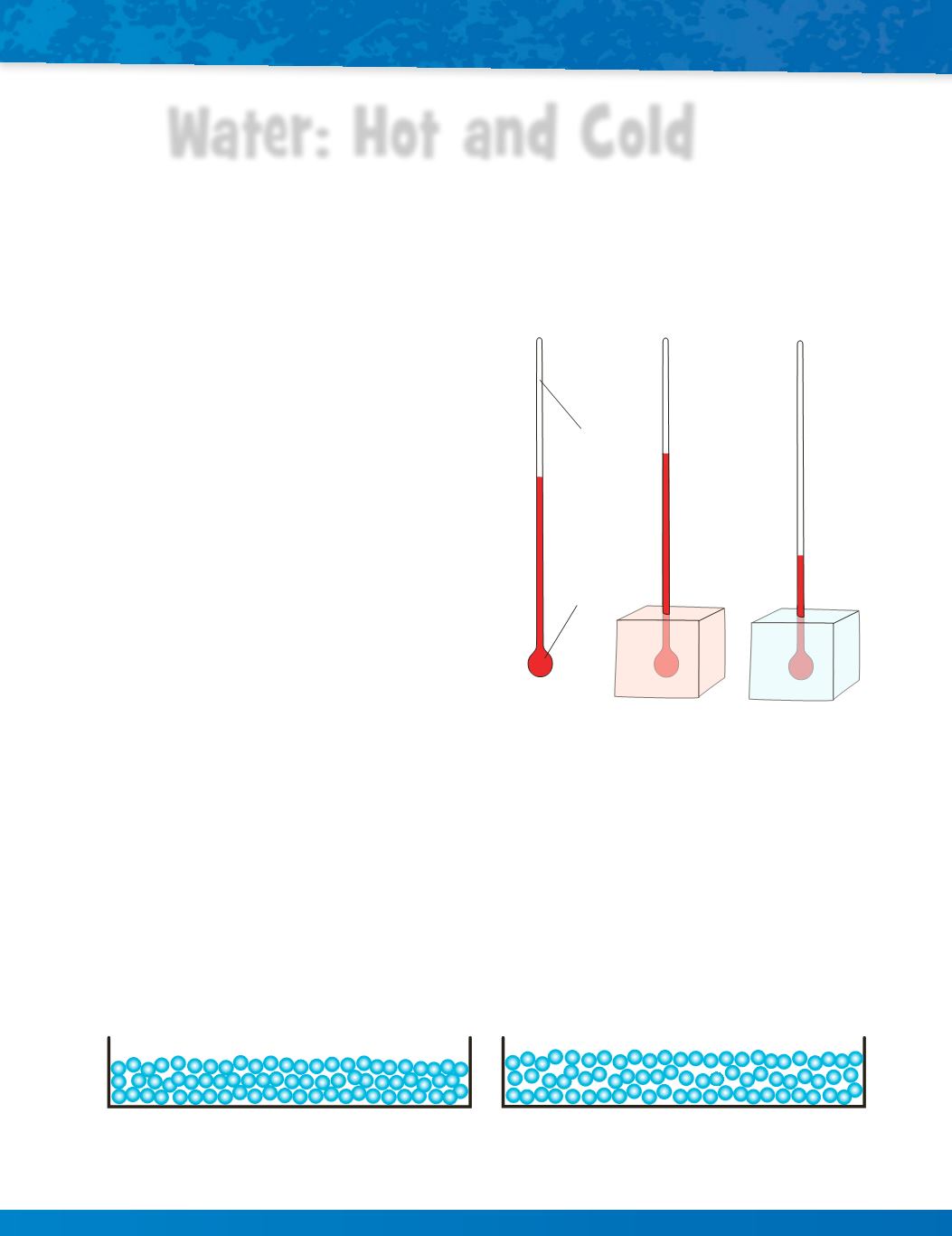

W
hen things get hot, something interesting happens. They get
bigger. Usually you can’t see that the hot material is bigger.
The change is small. But one place you can see that hot
material is bigger is in a bulb thermometer.
A bulb thermometer is a small
container of liquid attached to a thin
tube. The small container is the bulb.
The thin tube is the stem. When the
bulb gets hot, the liquid
expands
(gets larger). Liquid pushes farther up
the stem. When the bulb gets cold,
the liquid
contracts
(gets smaller).
Liquid pulls back into the bulb.
How does that happen? It happens
at a level that is invisible to our eyes.
This is what scientists have figured
out. Water is made of tiny particles
that are much too small to see. The
particles are moving around all the
time. They move faster when the water
is hot and slower when the water is cold.
Think about a pan of water. All the water particles bang into one
another all the time. That keeps a little space between the particles.
When the water is hot, the particles bang into one another harder.
Harder banging pushes the particles a little farther apart. When the
particles are farther apart, the volume of water in the pan increases.
Increased volume is expansion.
Now can you explain what happens to the liquid in a bulb
thermometer?
Water: Hot and Cold
Particles of cold water in a pan
Particles of hot water in a pan
Bulb
Stem
Hot
water
Cold
water
21









